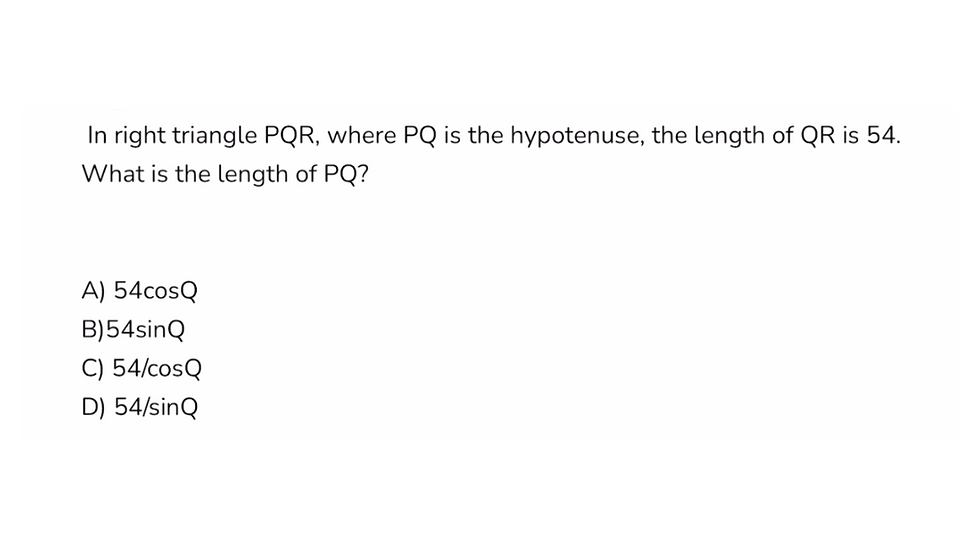December 2024 SAT Predictions: What to Expect on Test Day
- Laura (Heslin) Whitmore
- Nov 27, 2024
- 3 min read
By Laura Whitmore
The December SAT is just around the corner, and it’s time to focus on what could show up on test day. I’ll walk you through my top 10 predictions for this SAT—covering both Math and English—so you’ll know exactly what to brush up on during these final weeks.
Not up for reading? Watch my YouTube video instead!
Prediction 1. Consecutive Odd Integers

Consecutive odd integer problems are trending again, and they often trip students up. Remember, these integers increase by 2 (e.g., 3, 5, 7). Pay close attention to how word problems describe conditions like “50 less than the sum of two integers.” Translate the language into an equation carefully, and double-check your work to ensure you’ve set it up correctly.
Prediction 2. Verbs Ending in -ing

Grammar questions involving verbs ending in -ing often test whether you can recognize non-essential clauses. If a phrase set off by commas is non-essential, use an -ing verb to keep the sentence grammatically correct. Read the sentence out loud to check if it sounds natural—this simple trick works every time!
Prediction 3. Tricky Percentage Problems

Percentage problems require attention to detail. If a question says “increasing a value by 400%,” you must add 400% of the value to the original amount, not just multiply by four. Carefully read whether the question refers to a percentage of a value or a percentage increase. Misinterpreting this is one of the most common mistakes.
Prediction 4. Trigonometry

Expect at least one question involving SOH-CAH-TOA. Always draw a diagram and label the sides of the triangle as opposite, adjacent, or hypotenuse. Once you’ve identified these relationships, set up the appropriate trig ratio (sine, cosine, or tangent) and solve. Diagrams make all the difference here.
Prediction 5. Regression Problems

Regression questions have been showing up more frequently. These problems often include a table of values or multiple data points and ask you to find a line of best fit or make predictions. Use tools like Desmos to calculate regression equations easily. Enter the data into a table, type the equation, and let the software do the heavy lifting.
Prediction 6. Dashes for Non-Essential Clauses

When dashes are used in a sentence, they often set off non-essential information. To identify the correct punctuation, remove the phrase between the dashes. If the sentence still makes sense without it, you’ve identified a non-essential clause and should choose the answer with dashes.
Prediction 7. Systems of Equations with Binomials

Don’t let binomials in a system of equations intimidate you. Treat each binomial like a single variable, simplify the system, and solve as usual. If the problem asks for a specific value, simplify step by step and avoid unnecessary calculations until the end.
Prediction 8. Semicolons Separating Items in a List

Semicolons are often used to separate items in a list when those items already contain commas. Pay attention to sentences where semicolons are paired with “and” or “or.” This is a clear indicator that semicolons are being used to avoid confusion within the list.
Prediction 9. Margin of Error

If you encounter a question about margin of error, remember that increasing the sample size is the only way to reduce it. Be cautious with trap answers that suggest improving tools or methods; sample size is always the determining factor.
Prediction 10. Distinct Solutions of a Quadratic

Quadratic equations with distinct solutions are another likely topic. Use the discriminant formula (b^2 - 4ac) to determine the number of solutions: positive discriminant (two solutions), zero discriminant (one solution), and negative discriminant (no solutions). If the problem involves adjusting a parameter, graph the quadratic in Desmos or another graphing tool. Use sliders to explore how changes to the parameter affect the number of solutions.
These predictions are based on patterns I’ve seen across recent SAT tests, so they’re a great starting point for your final prep. If you haven’t already, download Preptly to access targeted practice questions. It’s a great resource for brushing up on specific skills without feeling overwhelmed.
Remember, the key to success on test day is preparation. Use this guide to focus your efforts, and you’ll walk into the December SAT feeling confident and ready to excel. Let’s finish strong!
Happy prepping!






111